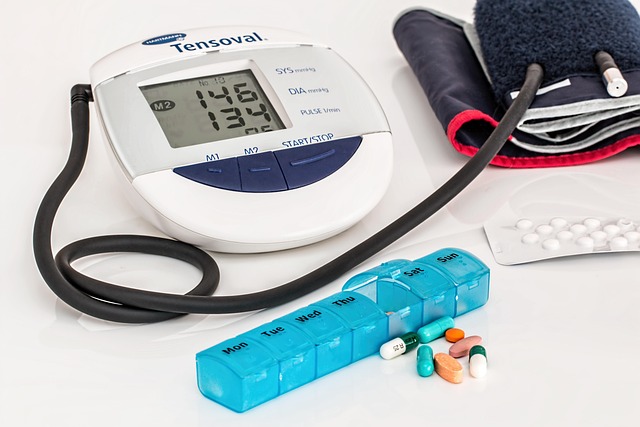Yeast and UTI infections with safe and effective treatments
Yeast infections and urinary tract infections (UTIs) are common health concerns that affect millions of people worldwide, particularly women. These conditions can cause significant discomfort and disrupt daily life, but the good news is that effective treatment options are readily available. Understanding the causes, symptoms, and treatment approaches for both yeast infections and UTIs is essential for quick relief and prevention of recurrence. This comprehensive guide explores the most effective treatment options and preventive measures to help restore your comfort and health.

Understanding Yeast Infections and Their Causes
Yeast infections, medically known as candidiasis, occur when there is an overgrowth of the Candida fungus, typically Candida albicans. This fungus naturally exists in small amounts in the vagina, mouth, digestive tract, and skin. However, certain factors can disrupt the natural balance of microorganisms, leading to yeast overgrowth. Common triggers include antibiotic use, hormonal changes, diabetes, weakened immune system, and even stress. The warm, moist environments of the vagina and other body parts provide ideal conditions for yeast to multiply rapidly when the body’s natural balance is disrupted.
The symptoms of a yeast infection typically include intense itching, burning sensation, redness and swelling of the vulva, thick white vaginal discharge resembling cottage cheese, pain during urination or intercourse, and general discomfort in the affected area. For men, yeast infections can cause redness, itching, and a rash on the penis, particularly after sexual contact with an infected partner.
Effective Treatments for Yeast Infections
Restore your comfort and health with personalized care for yeast infections through several proven treatment approaches. Over-the-counter antifungal medications are often the first line of defense and are available in various forms including creams, ointments, suppositories, and tablets. These medications typically contain active ingredients like miconazole, clotrimazole, or tioconazole that work to kill the fungus and relieve symptoms, usually within a few days to a week.
For more severe or recurrent infections, prescription-strength medications may be necessary. Fluconazole (Diflucan) is a common oral prescription medication that can clear up a yeast infection with just one dose. However, some infections might require multiple doses or longer treatment courses. Natural remedies like probiotic supplements, particularly those containing Lactobacillus species, can help restore the natural bacterial balance and prevent recurrence. Additionally, boric acid suppositories have shown effectiveness for resistant yeast infections, though they should only be used under medical supervision.
UTI Symptoms and Diagnosis
Urinary tract infections occur when bacteria enter the urinary system, typically through the urethra, and multiply in the bladder. Women are more susceptible to UTIs due to their shorter urethras, which allow bacteria to reach the bladder more easily. The most common symptoms include a strong, persistent urge to urinate, a burning sensation during urination, passing frequent small amounts of urine, cloudy or strong-smelling urine, pelvic pain in women, and rectal pain in men.
Proper diagnosis is crucial for effective treatment. Healthcare providers typically diagnose UTIs based on symptoms and a urine sample analysis to check for bacteria and white blood cells. In cases of recurrent UTIs, additional tests like ultrasound, cystoscopy, or CT scan may be recommended to identify any underlying issues such as kidney stones or structural abnormalities in the urinary tract that might be contributing to the recurring infections.
Managing and Preventing UTI Infections
Say goodbye to discomfort as advanced treatments help manage and prevent UTI infections effectively. The primary treatment for UTIs is antibiotics, with the specific type and duration depending on the bacteria causing the infection and the severity of symptoms. Common antibiotics prescribed include nitrofurantoin, trimethoprim-sulfamethoxazole, fosfomycin, and fluoroquinolones. It’s crucial to complete the full course of antibiotics even if symptoms improve before the medication is finished.
For symptom relief while antibiotics take effect, over-the-counter pain relievers like ibuprofen or phenazopyridine can help reduce discomfort. Drinking plenty of water helps flush bacteria from the urinary system, while avoiding irritants like caffeine, alcohol, and spicy foods can prevent worsening of symptoms. Prevention strategies include proper hygiene (wiping from front to back), staying hydrated, urinating before and after sexual activity, and avoiding potentially irritating feminine products like deodorant sprays or douches.
Integrated Approaches for Both Infections
Many people experience both yeast infections and UTIs, sometimes simultaneously or one after another, as the treatments for one can sometimes trigger the other. Antibiotics for UTIs can disrupt vaginal flora, increasing the risk of yeast infections. Similarly, the discomfort of a yeast infection can sometimes create conditions that make UTIs more likely.
An integrated approach focuses on treating the immediate infection while supporting overall urogenital health. This includes maintaining good hygiene without over-cleaning, wearing breathable cotton underwear, avoiding tight-fitting clothes, and staying well-hydrated. Dietary changes can also be beneficial, such as reducing sugar intake (which feeds yeast) and incorporating probiotic-rich foods like yogurt with active cultures. For those prone to recurrent infections, regular preventive measures might include low-dose prophylactic antibiotics for UTIs or maintenance antifungal therapy for chronic yeast infections, always under medical supervision.
Professional Treatment Options and Considerations
For persistent or recurrent infections that don’t respond to standard treatments, seeking specialized care is essential. Urogynecologists and infectious disease specialists can provide advanced diagnostic testing and personalized treatment plans. These might include extended-course therapies, identifying underlying conditions like diabetes or immunodeficiency, or testing for resistant strains of bacteria or fungi.
Women experiencing recurrent infections should consider comprehensive evaluation, as these might be symptoms of other health issues such as interstitial cystitis, vulvodynia, or even certain sexually transmitted infections that mimic yeast or UTI symptoms. Men with persistent yeast infections should also seek evaluation, as these can sometimes indicate undiagnosed diabetes or immune system issues.
This article is for informational purposes only and should not be considered medical advice. Please consult a qualified healthcare professional for personalized guidance and treatment.




